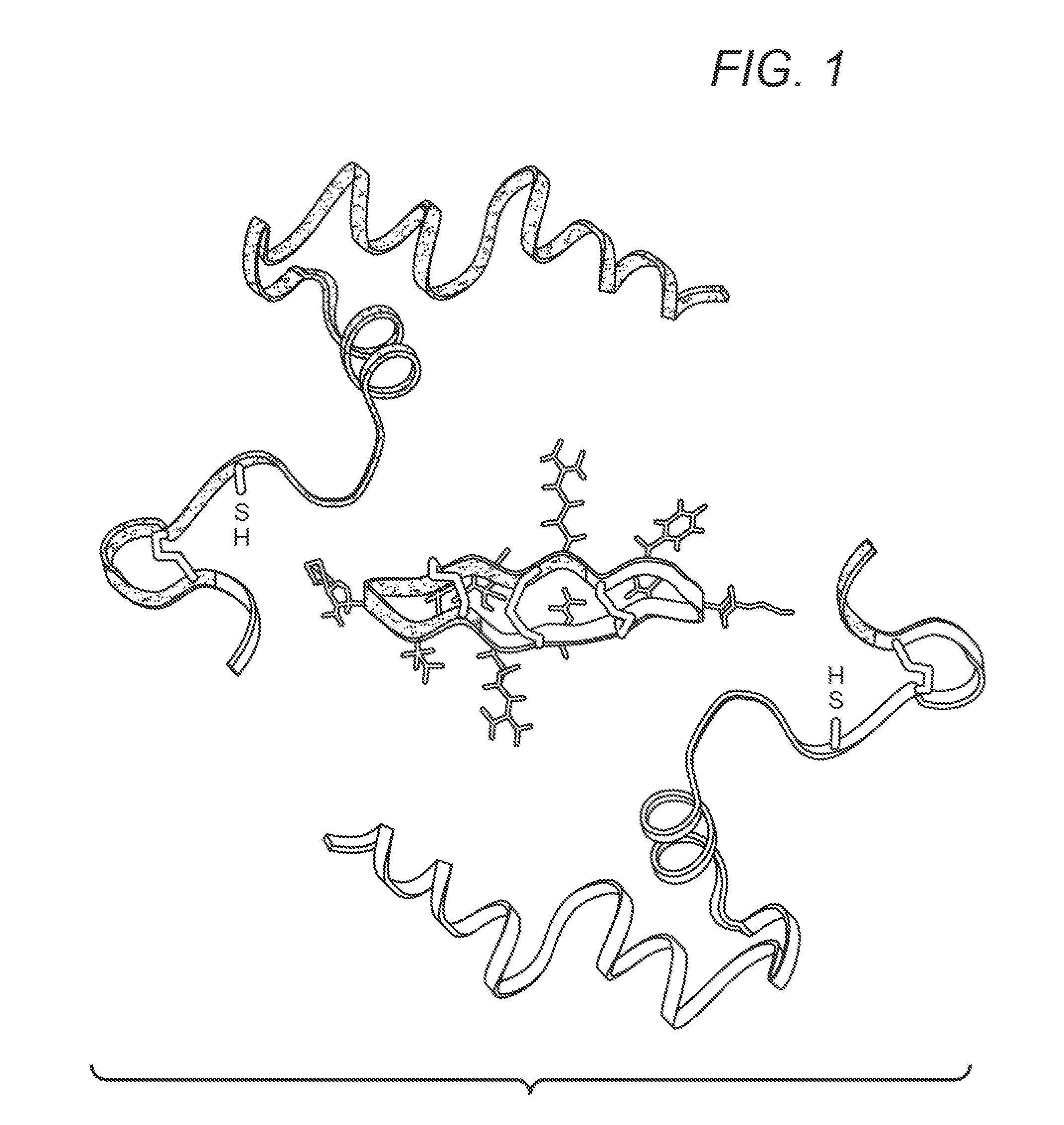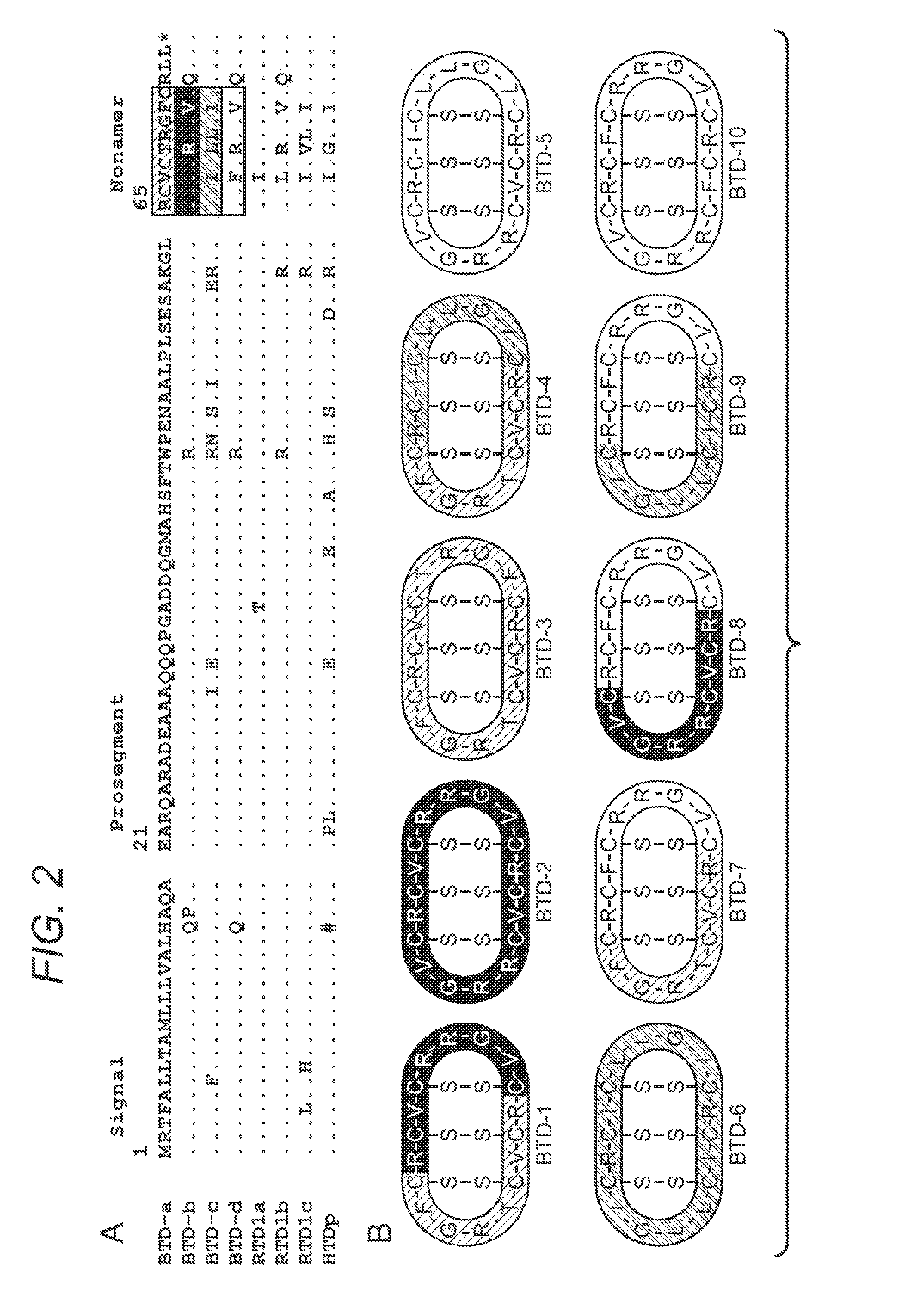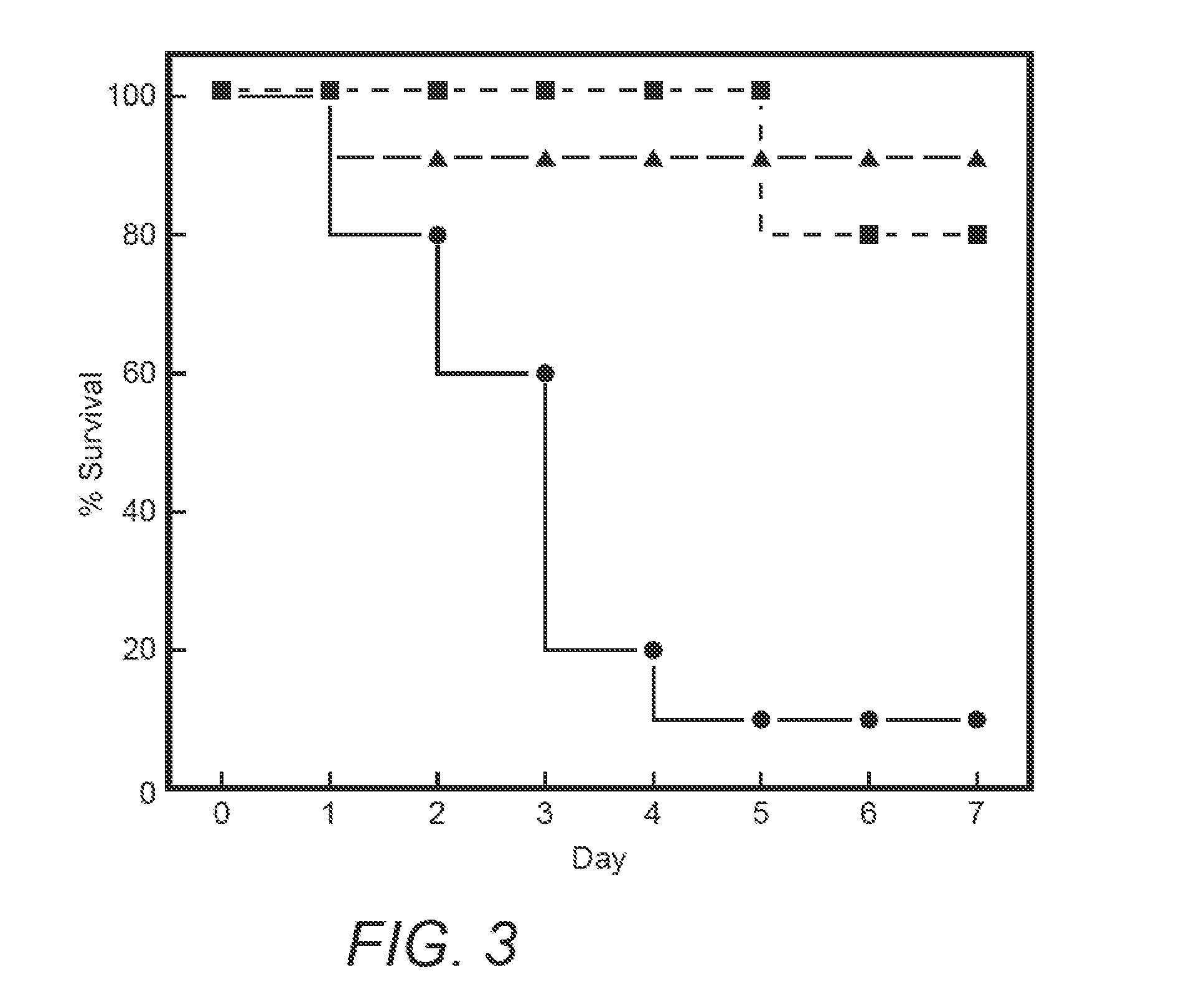Inhibition Of Tace Activity With Cyclic Peptides
a cyclic peptide and tace technology, applied in the field of cyclic peptides, can solve the problems of compound approval, stymie of the deleterious effect of this process,
- Summary
- Abstract
- Description
- Claims
- Application Information
AI Technical Summary
Benefits of technology
Problems solved by technology
Method used
Image
Examples
example 1
Unique Properties of Pleiotropic θ-Defensins and Anti-Inflammatory Properties
[0060]θ-defensins kill E. coli cells by generating small pores in the cell envelope that mediates their own uptake (24). In this study, the inventors made the remarkable discovery that, unlike many α- and β-defensins, θ-defensins are non-toxic to host cells (24) and may be administered by various routes to mice (29). In this regard, mice readily tolerate i.v. administration of at least 80 mg / kg doses of three different θ-defensins. The inventors have also administered RTD-1 in escalating i.v. doses (3 mg / kg maximum) to two adult chimpanzees. No clinical toxicity was observed at any point and all clinical chemistry and hematologic laboratory values were within normal limits following all injections. Neither animal produced an antibody to RTD-1, thereby demonstrating a remarkable lack of toxicity and immunogenicity across different mammalian species. Based on these and other data, RTD-1 was tested for efficac...
example 2
RTD-1 Activity is Mediated through Host Cell Interaction Rather than Antimicrobial Effect
[0063]Several lines of data demonstrate that the archetypal θ-defensin, RTD-1, exerts its anti-inflammatory effects by interacting with host cells rather than through an antimicrobial effect (29). These findings led to further experiments evaluating the effect of RTDs on the production of TNF-α by human whole blood stimulated with E. coli or S. aureus. A representative experiment, shown in FIG. 4 (B & C), demonstrates that RTDs 1-5 (FIG. 4A) inhibit E. coli-induced TNF-α release; note that even among different θ-defensins there is a notably different inhibitory potency among them. Similar results were obtained in experiments with S. aureus. In control experiments, the inventors discovered that unlike many other defensins, the θ-defensins do not interact directly with TNF-α protein, based on results demonstrating that the peptides do not alter the ELISA standard curves and the immunoassay detects...
example 3
Inhibition of TACE by θ-Defensins
[0064]Since these results demonstrate θ-defensin-mediated inhibition of TNF-α induced by bacteria (FIG. 4), various TLR agonists (FIG. 5), and that measured in animals (see above), one possible mechanism of action was that the activity of TNF-α converting enzyme might be antagonized by θ-defensins. This TNF-α converting enzyme (“TACE”, also known as ADAM 17, a member of the ADAM (a disintegrin and metalloproteinase) family)), is a sheddase responsible for release of membrane bound TNF-α release. Surprisingly, the inventors found that RTD-1 is a potent inhibitor of recombinant TACE (rTACE) with an IC50 of ˜0.1 μg / ml (48 nM). Of note, neither human α-defensin (HNP-2, HNP-4) inhibited rTACE (FIG. 6A), making the activity of θ-defensin unique among defensins. The relative inhibitory activities of natural θ-defensins (RTD 1-5; structures in FIG. 4A) were tested and found to vary over an ˜10-fold range of IC50 values (FIG. 6B). Of note, the hierarchy of TA...
PUM
| Property | Measurement | Unit |
|---|---|---|
| concentrations | aaaaa | aaaaa |
| concentrations | aaaaa | aaaaa |
| concentrations | aaaaa | aaaaa |
Abstract
Description
Claims
Application Information
 Login to View More
Login to View More - R&D
- Intellectual Property
- Life Sciences
- Materials
- Tech Scout
- Unparalleled Data Quality
- Higher Quality Content
- 60% Fewer Hallucinations
Browse by: Latest US Patents, China's latest patents, Technical Efficacy Thesaurus, Application Domain, Technology Topic, Popular Technical Reports.
© 2025 PatSnap. All rights reserved.Legal|Privacy policy|Modern Slavery Act Transparency Statement|Sitemap|About US| Contact US: help@patsnap.com



